Another Timbre TimHarrisonbre
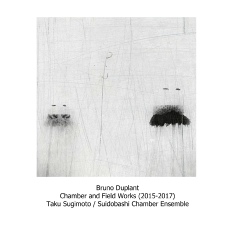
at120x2 Bruno Duplant - Chamber and Field Works 2015 - 2017
Taku Sugimoto / Suidobashi Chamber Ensemble
Disc One
1 all that I learned and then forgot (2015) 18:36
2 where our dreams get lost (2017) 18:20 youtube extract
3 a place of possibilities (2017) 16:17
Suidobashi Chamber Ensemble
Disc Two
1 lEttEr to tAku (2017) 44:15 youtube extract
Taku Sugimoto (guitar)
Disc Two
one lEttEr to tAku (field music for guitar) (2017) 44:25
Taku Sugimoto (Guitar, small amplifier, bow, park)
Interview with Bruno Duplant
How did your collaboration with Taku Sugimoto and the Suidobashi Chamber Ensemble come about?
After writing guitar pieces for Cristian Alveár (« premières et dernières pensées avant de s’endormir », published on Rhizome.s), and Denis Sorokin (« places & fields », published on B-Boim), I wanted to write a new score for solo guitar. For more than twenty years Taku Sugimoto has been one of the most exciting guitarists around, as important as Derek Bailey was. I decided to contact him and propose writing a score for him. But then I thought, why not do both things at the same time? So I decided to write him a letter, and the letter itself would be the score. Taku found the idea both funny and interesting, and he decided to record the piece. At the same time he asked me if I had any scores that could be played by an ensemble that he played with, the Suidobashi Chamber Ensemble. I was very pleased with the idea, and had three scores ready which were suitable to be played by them. So the sequence of events moved fast, but flowed totally naturally; everything felt so evident.
Tell us a bit more about the solo guitar piece, ‘lEttEr to tAku’. How does the score work, and whose idea was it that it should be performed outdoors?
The score was written first as a surprise, but also as something genuinely hybrid, where composition and chance would combine in an indeterminate setting (the outdoor sounds). I wanted to make something that was specifically for Taku and his particular way of playing guitar. So a lot of silence, something truly suspended and with a real fragility, but I also wanted to include sounds from real life, and the park in Tokyo was prefect. I also wanted there to be a gap between the guitar and the sounds from everyday life. So field recordings are 50% of the piece (or even more) and Taku played a lot with them while respecting the score. For me this piece was a question of fragility, poetry and equilibrium, and Taku was surely the best person to perform it. I am so happy with the result, and I know that Taku also likes it a lot. It was a question of correspondence and connection (in French there is one only word for both, “correspondence”). Music has to be pleasure above all.
You’ve quite often used field recordings in your music, and have performed pieces by yourself and others in outdoor locations. What is it that attracts you to the sounds of the outside world?
I think my deep interest in the sounds of the outside world is both natural and cultural. But to answer I’d like to quote John Cage : “One day when the windows were open, Christian Wolff played one of his pieces at the piano. Sounds of traffic, boat horns, were heard not only during the silences in the music, but, being louder, were more easily heard than the piano sounds themselves. Afterward, someone asked Christian Wolff to play the piece again with the windows closed. Christian Wolff said he'd be glad to, but that it wasn't really necessary, since the sounds of the environment were in no sense an interruption of those of the music.”
The Suidobashi Chamber Ensemble also play your pieces beautifully. Had you come across them before, and how closely have you followed recent trends within experimental music in Japan?
Firstly thanks for the compliment, which is the best kind of recognition for the ensemble’s beautiful work. As I said, the idea came from Taku, who asked if I had any scores suitable for an ensemble. I already knew the Suidobashi Chamber Ensemble from a beautiful recording on Ftarri (playing Frey, Pisaro & Beuger), so it was obviously a real opportunity for me and an honour to have them play my music. I had three scores ready (just), so I sent them to Taku and Wakana Ikeda, who were keen both to play them live and also record them. All that remained was to find a date and a place for the recording, and that was quite easy thanks to Yoshiyuki Suzuki at Ftarri. Correspondence with Wakana was perfect and a true pleasure.
I’ve followed experimental music in Japan for many years. Without trying to caricature, I am very interested in and sensitive to this poetic, minimalist, even pointillist approach to music. Silence and a certain fragility, and at the same time a great rigour in interpretation. I already found this in my previous collaborations with two other fantastic musicians, Ryoko Akama and Ko Ishikawa. Things that are flowing so well should not be stopped.
One of the instructions in the score for ‘where our dreams get lost’ is “like instrumental waves / with some melancholic tones”. That, together with the passion for ‘fragility’ that you picked out above, seems to characterise the mood of a lot of your music. Why do you think you are particularly drawn to those moods?
I think I have always been strongly drawn to those moods. ‘Melancholia’ is a state of mind and could almost also be considered a certain philosophy or way of life. Music, in my opinion, must reflect one’s own deep self, one’s vision of beauty; it then becomes catharsis, purification and purgation of emotions. ‘Fragility’ is one of the manifestations of melancholia, like waves are its physical ones (cf. Virginia Woolf). I think I am not the only person to whom this applies, but I am glad that such things are evident when you listen to my music.
How would you describe the music you are writing now, and how has it changed from what you were doing before?
For me at first graphic scores were the best and simplest solution for writing music which was to be played by other musicians. So I used graphic scores for my first two compositions: “9 times 5” (Ilse Records, 2012) and ‘One for Five’ (Point Engraved Editions, 2012). Then I wrote some text scores such as « espèces d’espaces » (Suppedaneum, 2014), « a field, next to nothing » (Another Timbre, 2014) and « immobilité » (Notice Recordings, 2015). After that I tried using the letters from the texts as notes, as in ‘lEttEr to tAku’, but also on most of my CD « places & fields », which was published on Radu Malfatti’s B-boim label. So changes have occurred, but it’s been a gradual process. However one thing that hasn’t changed is chance. All my scores are made using chance, to let the musicians be part of the process. Recently I have written some new scores which have been played by great musicians such as Dante Boon, Reinier van Houdt, and others. Some of these will be played and recorded early this year, such as a string quartet (with Morgan Evans-Weiler). But I prefer music critics to speak about my music.
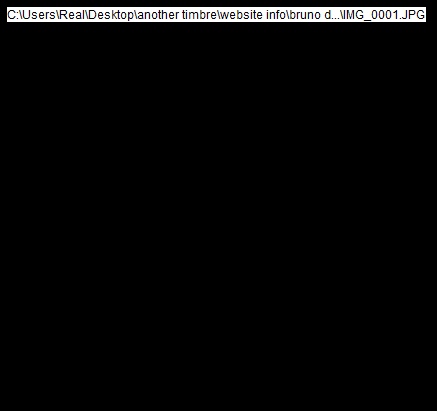
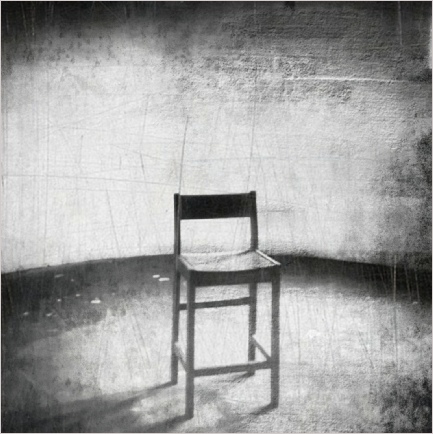
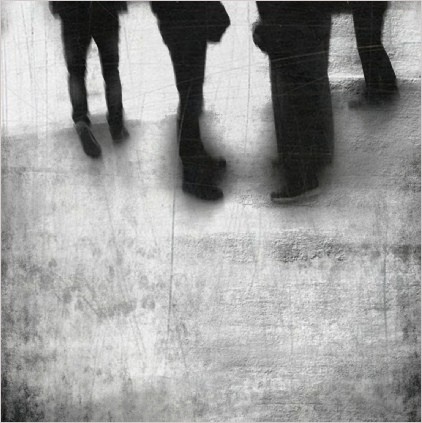
Drawing of Bruno Duplant by Amélie Vidgrain Duplant
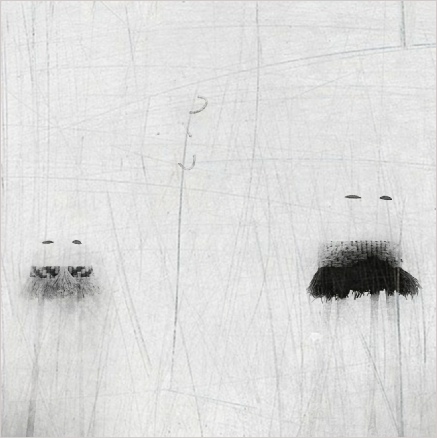
The album’s cover image is a photograph of two sculptures from the series ‘Figures’ by the French artist Anne Breton
You can read more about the ‘Figures’ project and see other examples of her work here
Photos by Bruno Duplant
The Suidobashi Chamber Ensemble
are a Tokyo-based group for new music:
Wakana Ikeda - flute & harmonica
Yoko Ikeda - violin & viola
Masahiko Okura - clarinets
Taku Sugimoto - guitar & mandolin
Aya Naito - bassoon & voice
+ Hikaru Yamada - electronics
Reviews
“A very enjoyable 2-disc set of works by Duplant performed by Taku Sugimoto and the Suidobashi Chamber Ensemble. Disc One is given over to three pieces with the group, a sextet and two quintets (Aya Naito, bassoon & voice; Hikaru Yamada, electronics; Masahiko Okura, soprano & contrabass clarinet; Sugimoto, electric guitar, bow, e-bow & bowed mandolin; Wakana Ikeda, flute, harmonica; and Yoko Ikeda, violin & viola). Surely a great deal of the successful realization of these works is due to the ensemble, which plays with wonderful sensitivity and awareness of subtle modulations. The pieces share certain characteristics, most clearly slowness, quietness and long tone duration. 'all that I learned and then forgot' (2015) has slowly descending tones, bending ever so slightly downward, delicately layered and sequenced. The second track, 'where our dreams get lost' (2017) is one where I suspect that the ensemble is doing the heavy lifting. I have no idea what the score for any of the pieces is like (save for the one on Disc Two), but here the long lines are single notes fairly close together; the concept sounds simple. But the performance is so flowing, so clear and, dare I say, heartfelt, that the emergent beauty more than belies the surface simplicity. There's a shift in textural content on 'a place of possibilities' (2017), a harsher violin, a voice, the winds sounding somewhat more agitated. The long tones are retained, but the atmosphere is more doubtful, an appropriate and effective tonic for the previous two compositions.
'lEttEr to tAku (field music for guitar)', which occupies the second disc, is a different story, the "score" being a letter sent by Dupont to Sugimoto. It's a solo piece for Sugimoto (guitar, small amplifier, bow, park) performed and recorded at Hanegi Park in Tokyo. He's made recordings in a similar vein before (I'm thinking of 'Live in Australia' and others) where he's played so sparingly that it's often difficult to discern his presence. Here, his sound is clear, foregrounded from the environment yet attached to it. Children, planes, cicadas and other sounds envelop the single guitar notes, sometimes short, more often allowed to hover. Somewhere after the midway point, Sugimoto briefly switches to the bow, creating sharp but gentle slivers of sound, slicing through the park, recalling Michael Pisaro's sine waves in his 'Transparent Cities' projects. Toward the end, the notes seem to come more often, small clusters, like leaves. A lovely performance, beautifully recorded.
An excellent release all around, possibly my favorite thing heard from Duplant thus far.”
Brian Olewnick, Just Outside
“Quand je repense aux premiers enregistrements que j'ai entendu de Bruno Duplant au début des années 2010, lorsqu'il jouait de la contrebasse dans des formations d'improvisation libre à distance, je suis vraiment surpris de voir tout le chemin que ce musicien a parcouru. A cette période je n'aurais jamais imaginé qu'il devienne compositeur, et j'imaginais encore moins que ses pièces seraient réalisées par Taku Sugimoto. (Pareil pour ceux qui ont connu Sugimoto à la fin des années 80, début 90, lorsqu'il faisait de la guitare dans un groupe psyché, qui aurait imaginé qu'il dirigerait un orchestre de chambre quelques décennies plus tard ?) Et pourtant, quelques années et quelques dizaines de disques plus tard, voilà bien trois pièces de Duplant réalisées par un orchestre de chambre japonais (dirigé par Sugimoto) et une pièce mixte jouée par Sugimoto, présentées dans un très beau double CD publié sur Another Timbre.
Le premier disque regroupe les trois pièces les plus instrumentales, réalisées par le Suidobashi Chamber Ensemble avec Aya Naito au basson et à la voix, Hikaru Yamada à l'électronique, Masahiko Okura aux clarinettes soprano et contrebasse, Taku Sugimoto aux guitare et mandoline, Wakana Ikeda à la flûte et à l'harmonica et Yoko Ikeda au violon et à la viole. Il y a quelque chose de poétique et d'onirique dans ces pièces. Un quelque chose qui laisse songeur, rêveur. Ca ne paraît pas aux premiers instants, mais très vite on se laisse immerger dans ce flot étrange de notes tenues, parfois mélodieuses, parfois grinçantes. De longs sons parfois entrecoupés de bruits, qui ne laissent aucune place au silence et au repos, mais ne sont jamais ni si tendues ni agressives. Il n'y a pas besoin de repos à vrai dire, même si ce ne sont pas des drones et que ces pièces sont toujours en mouvement, il y a une constance dans la dynamique et cette constance suffit à elle-seule à construire une pièce. On se retrouve ainsi avec un ensemble de pièces où les notes glissent, émergent et se noient, dans un tout qui a quelque chose d'aquatique, de marin. Cet aspect marin, c'est l'équilibre très juste entre la constance du mouvement global et l'imprévisibilité de ce qui le constitue (chaque intervention instrumentale en fait). Bruno Duplant semble jouer sur cet équilibre entre linéarité et incertitude, et c'est ce jeu qui nous plonge dans une sorte de rêve éveillé où tout semble familier sans que l'on sache jamais vraiment où nous sommes ou ce qui va arriver.
Quant au deuxième disque, il est complètement différent dans la forme, et pourtant, il fait quand même ressurgir des émotions similaires. Il s'agit ici d'une longue pièce de 45 minutes pour field-recordings et guitare, réalisée par Taku Sugimoto seul. Ce dernier a réalisé cette pièce à partir de longs enregistrements bruts de parcs où se mêlent oiseaux, enfants, sons urbains lointains, machines d'espace vert, etc. Et à travers ces field-recordings, Taku Sugimoto dissémine avec parcimonie des notes de guitares pincées ou frottées, entrecoupées de longs silences, et jouées avec beaucoup de finesse. Alors non ça ne ressemble pas du tout au premier disque, et pourtant on retrouve de nombreux points communs, ceux qui faisaient justement la beauté des premières pièces pour orchestre de chambre. On retrouve cet équilibre étrange dans l'incertitude des enregistrements, dans la durée des silences et des notes, d'un côté, et toujours une constance dans les dynamiques des enregistrements comme de la guitare. Cet équilibre est aussi celui entre la composition et la place laissée au hasard, car les partitions du Duplant laisse une grande marge à Sugimoto afin que ce dernier fasse autant partie du processus de création que le compositeur lui-même.
C'est l'équilibre entre la composition et la réalisation, entre la détermination et l'indétermination, entre le bruit et la musique qui font de ces pièces des pièces qui ressemblent à des morceaux de vie, des pièces vivantes et organiques malgré leur minimalisme. Un équilibre "fragile" et une beauté instrumentale qui font de ces pièces des instants qui nous plongent dans un état autre, rêveur, "mélancolique" dirait Bruno Duplant.”
Julien Heraud, Improv-sphere
“Chamber And Field Works (2015-2017) is a two-disc CD set bringing together selection of four works from this French composer- who creates sourly droning-to-stripped back modern composition.
This two-disc set appeared in February of this year on the Sheffield based Another Timbre, who always have the knack of putting out interesting & creative improv/ modern composition. As we’ve come to expect from the label the two discs come in the minimal white gatefold package- and this features a selection of sparse/ stark black & white pictures.
Frenchman Burno Duplant has been creating work since around 2009- releasing so far around nearing fifty full-length releases. I’d heard his name in the past, but this is the first time I’ve checked out his work, after being impressed by the samples of this release on the label's website.
The release is evenly split between the two discs- on the first disc, we have a selection three pared back & unbalancing drone-based compositions played by Tokyo based Suidobashi Chamber Ensemble. And on the second disc a forty-four-minute blend of minimal guitar & field recording based work.
Each of the three tracks on the first disc fall between the thirteen & eighteen-minute mark. And first, up we have “All That I Learned And Then Forgot”- this composition is from 2015, and utilizes a blend of bassoon electronics, soprano & contrabass clarinet, electric guitar, bow & E-bow, Flute, Violin & Viola. This work is built around a selection of wavering & stretched tones that are fed out into a wonderfully unbalancing & sparse sound river of pitch shift- the whole thing seems to be constantly deflating & running down- yet at the same time there’s a wonderfully moody glow to the proceedings. Both Duplant’s composition & Suidobashi Chamber Ensemble playing wonderful blend together to create a very effective feeling of stretched unsettlement & wonky simmering brood.
The next track is entitled “Where Our Dreams Get Lost”, and this is from 2017. On this track, we have a blend of bassoon, soprano sax, electric guitar, E-bow, harmonica & Violin. This composition is made up of selection of sustained tones, their fading, and silence- with the occasional picking dart from the string instrumentation. Once again there is a feeling of waving pitch shift un-balance-ment in the work, but as well there’s a feeling of slightly jarring sprightly-ness when you get the sudden string pics. All giving one the feeling of staring out of a barren autumn vista of striped tree , which is ever so often broken by the brief flight of grey birds.
The final track on the first disc is another 2017 composition, and this is entitled “A Place Of Possibilities”. This track is built around a mix of female voice, Suparno Clarinet, bowed mandolin, harmonica, and violin. To start with we have the extremely pared back mix of just sustained female humming & scratching violin repetitions- as the track progresses we get more wavering & sawing tones are added into the mix, along with the occasional high pitched feedback nip. Altogether the track summons up an effective sonic feeling of wavering heat & sourness- almost like the composition is wrapped in a pressing sun haze, and at moments it has an almost slurred industrial or subtle noise feel to it.
The second disc is taken up by "lEttEr to tAku( field music for guitar)"- this comes in at the 44.25 mark. The track is a blend of sporadic/ subtle picking ‘n’ twanging guitar, and field recordings- playing the guitar is by Taku Sugimoto, and the field recordings are from Hanegu Park in Tokyo. The track was recorded on a September day last year, and it’s certainly a curio- much of the track's runtime is taken up by the sounds of the park, and this takes in distant birdsong, drifting people chatter, passing traffic, a garden strimmer, etc. Ever so often sudden clusters of notation appear from the small amplified guitar, and these are seemingly picking out in a vague sort of pattern, which at times leans towards the harmonic structure. The track is both soothing & intriguing, as ones hearing darts from the foreground of the field recordings & the sudden close-up darts of the guitar. I’m not sure what is actually composed/ arranged here- as the inlay notes don’t indicate, but I certainly found the whole thing appeal in it's pared-back manner. The whole track rather brought to mind a more stark & pared-back version of the type of thing Australian electro/ acoustic Seaworthy did on their 2009 release 1897.
Chamber And Field Works (2015-2017) is certainly another worthy & intriguing addition to Another Timbre’s growing catalogue. And I can see this very much appealing to those who like creative drone based modern composition and guitar/ field recording blends. And I’ll certainly be on the look-out to sample more of Mr. Duplant’s work in the future.”
Roger Batty, Musique Machine